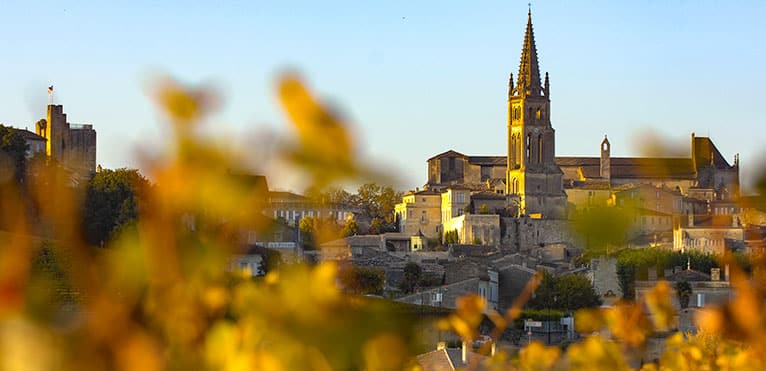
Contents
Pauillac is one of the best-known appellations in the Médoc, part of the prestigious Bordeaux wine region. The Pauillac appellation, which produces exclusively red wines, is located on the left bank of the Gironde, between the equally famous Saint Estèphe and Saint Julien appellations.
The appellation takes its name from the wine capital of the Médoc: the beautiful port town of Pauillac. The reputation of Pauillac’s wines comes from its eighteen Châteaux listed among the Grands Crus Classés of 1855, three of which are in 1st place. Growths: Châteaux Lafite Rothschild, Château Latour and Château Mouton Rothschild.
The Pauillac appellation is simply exceptional
The history of winegrowing in Pauillac dates back to the 14th century, but it was not until the 18th century that viticulture really took off in the region. Like all Bordeaux vineyards, the history of the Pauillac appellation was forged by the 1855 classification of Bordeaux Grands Crus.
The terroir of Pauillac is identified as exceptional, and no less than eighteen of its Châteaux are classified as Crus. This represents 85% of Pauillac’s wine production. The region is renowned for its wines, but also for its Châteaux: we never tire of admiring these magnificent buildings that stand like jewels in the heart of the vineyards.
For the record, although the Pauillac appellation only includes red wines, Château Mouton Rothschild couldn’t resist planting a few white grape varieties. So, under the AOC Bordeaux appellation, “Aile D’argent” is produced. It’s a confidential wine of great rarity, a delight for oenophiles.
The remarkable terroir of the Pauillac vineyards
So what’s so special about Pauillac? First and foremost, it’s the soil that makes the difference. Geographically, the 1200 hectares of the Pauillac appellation are separated into two plateaux by the Gahet stream. The Pouyalet plateau is very gently sloping, with a maximum altitude of 30 metres. The Saint Lambert plateau is completely flat. Both plateaus are well drained, thanks in particular to their gravelly limestone soils. The soil is so poor that vines are the only organisms that can grow there.
The poor soil forces the vines to grow underground in search of vital nutrients. The vines produce grapes of the highest quality. These ripen thanks to the temperate oceanic climate, with mild winters, dry summers and plenty of sunshine.
As far as grape varieties are concerned, Cabernet Sauvignon dominates, as it does throughout the Left Bank of Bordeaux. Pauillac wines are blends, with Cabernet Sauvignon complemented by Merlot and Cabernet Franc. Sometimes Petit Verdot or Carménère are added to this blend.
Pauillac, wines of emotion
Pauillac wines are wines of emotion. First of all, their deep ruby-red color with crimson highlights is a real eye-catcher. The color is limpid and brilliant. The nose is expressive and elegant, with morello cherry, blackcurrant and blackberry predominating, blending harmoniously with more complex vanilla, spice, leather and wood aromas. On the palate, the attack is frank and striking in its breadth. The wine is powerful and concentrated. Then comes the material, made up of incredibly fine, elegant tannins. The finish is long, with complex notes of secondary and tertiary aromas, leaving the palate with memories of this precious nectar.
To fully appreciate these exceptional wines, we recommend cellaring them for at least 10 years, or even several decades depending on the wine. To ensure that the wine reaches its full tasting potential, we recommend decanting two hours before serving, at a temperature of between 16 and 17 degrees.
Food to match the wines of Pauillac
To accompany this wine, you need exceptional dishes. For example, roast suckling lamb with thyme, venison with grand veneur sauce, or roast quail with chestnuts. More generally, this wine goes well with red meats and game. The must-try is the matured prime rib cooked with vine oaths, a real treat.
Top 16 Pauillac vintages since 1950
The best AOC Pauillac vintages since 1950 are: 1953, 1955, 1959, 1961, 1975, 1982, 1985, 1986, 1988, 1989, 1990, 1995, 1998, 2000, 2005, and 2009.
Pauillac boasts a number of legendary châteaux
Château Lynch-Moussas
Château Lynch Moussas is a prestigious Pauillac wine estate, one of the Grands Crus Classés AOC Pauillac in 1855. Behind this legendary wine is the Castéja family, owners of the Château for over 100 years! Indeed, Lynch-Moussas is a family affair. Jean Castéja acquired the château in 1919. Since then, four generations of Castéja have contributed to the reputation of the cru. They have each added their own touch to perfect this Grand Cru d’Excellence.
Château Pontet Canet
Classified as the fifth Grand Cru, Château Pontet Canet is very famous. In three hundred years, only three families have owned it. Each of them has contributed to the Cru’s renown. Today, the Tesseron family is the proud owner. The most unique feature of Château Pontet Canet is that its 81 hectares are farmed biodynamically. Hats off to this fifth Grand Cru!